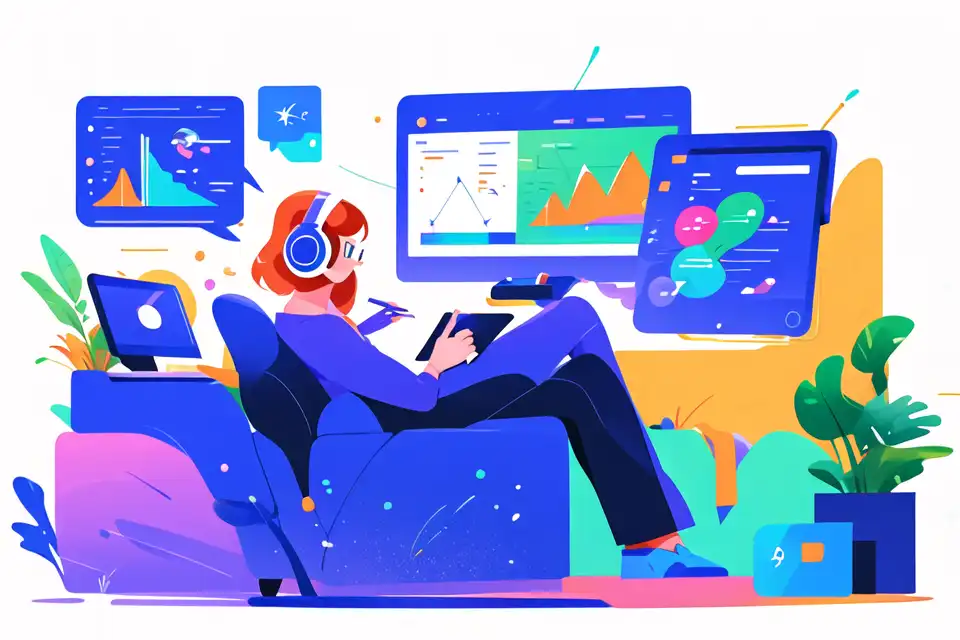Friction
Deepen your understanding of friction and optimize your strategies for success with Lark's tailored solutions designed to meet the unique demands of the marketing industry.
Try Lark for Free
The concept of friction in marketing encapsulates the various obstacles and resistance points that consumers encounter during their engagement with a brand or its products and services. These points of friction can manifest in numerous forms, ranging from cumbersome purchasing processes to ineffective communication strategies. Recognizing the significance of friction in marketing is essential for businesses striving to enhance customer experiences and drive sustainable growth.
Use Lark Base for orchestrating, executing, monitoring, and delivering marketing initiatives.
Importance of friction in marketing
Defining Friction and Its Relevance in Marketing
Friction in marketing encompasses any element that hinders the seamless interaction between businesses and consumers. These obstacles can arise through complex purchasing processes, inadequate information delivery, or mismatched customer expectations. Identifying and addressing these areas of friction is pivotal for optimizing customer journeys and fostering long-term loyalty.
The Significance of Friction in Marketing
The impact of friction in marketing cannot be underestimated. It directly affects customer satisfaction, retention rates, and ultimately, a company's bottom line. By unraveling the layers of friction within their marketing strategies, businesses can identify key improvement areas and create more streamlined, engaging experiences for their target audience.
Impact of friction in marketing
Understanding Consumer Engagement and Its Relationship to Friction
Consumer engagement is intricately linked to the presence of friction within marketing endeavors. The level of friction present in a consumer's journey can significantly influence their perception of a brand, affecting their propensity to convert and remain loyal. Therefore, understanding the intricacies of consumer engagement and its relationship to friction is crucial for businesses aiming to optimize their marketing efforts.
Exploring Stakeholders and the Impact of Friction
In the marketing ecosystem, various stakeholders, including consumers, businesses, and intermediaries, are impacted by friction in distinct ways. For consumers, encountering friction points can lead to dissatisfaction and abandonment of potential transactions. Conversely, businesses face the risk of decreased customer satisfaction and loyalty. Intermediaries, such as marketing agencies, can also experience challenges in delivering results due to friction adversely impacting consumer behaviors.
Practical implications of friction
Unpacking Practical Implications of Friction in Marketing
The practical implications of friction in marketing are diverse and can manifest across different touchpoints in the consumer journey. Understanding these implications is key to identifying areas for improvement and implementing effective strategies to mitigate friction.
- Examples:
- Difficulty in navigating an e-commerce website leading to cart abandonment.
- Lengthy and convoluted customer onboarding processes hindering user acquisition.
- Poorly targeted marketing communications resulting in disengaged audiences.
Best Practices When Considering Friction and Why It Matters
Incorporating best practices to mitigate friction is imperative for businesses committed to enhancing their marketing effectiveness. By identifying and addressing friction points, businesses can streamline customer experiences, drive conversions, and foster lasting brand loyalty.
- Examples of Best Practices:
- Implementing intuitive UX/UI designs to simplify website navigation.
- Personalizing communication strategies to resonate with diverse consumer segments.
- Streamlining purchasing processes to minimize potential points of friction.
Related:
Marketing MeetingLearn more about Lark x Marketing
Leveraging friction in marketing
Actionable Tips for Leveraging Friction in Marketing
While friction is often perceived as a hindrance, savvy businesses can strategically leverage it to their advantage, leading to enhanced customer interactions and improved business outcomes. Effectively leveraging friction involves understanding its root causes and employing tailored strategies to convert potential obstacles into opportunities.
- Actionable Tips:
- Embrace consumer feedback as a means to identify and address friction points.
- Utilize data analytics to gain insights into consumer behavior and preferences, enabling the mitigation of potential sources of friction.
- Continuously iterate and optimize marketing strategies based on evolving consumer needs and market dynamics, turning friction into a catalyst for innovation.
Related terms and concepts
In the realm of marketing, several related terms and concepts intersect with the overarching theme of friction. These encompass elements such as user experience (UX) design, customer journey mapping, and behavioral economics, all of which contribute to a comprehensive understanding of friction and its implications in marketing.
Related:
Lark | Sales and MarketingLearn more about Lark x Marketing
Conclusion
The pervasive nature of friction in marketing dictates that businesses must proactively identify, address, and leverage it to optimize their strategies and elevate consumer experiences. Embracing this approach empowers businesses to not only mitigate potential obstacles but also harness friction to propel innovation and drive sustainable growth.
Examples
Instances of friction in marketing
Instances of friction in marketing
Friction in marketing can take various forms, significantly impacting consumer behaviors and business performance.
Example 1: Confusing Checkout Process Leading to Abandoned Carts
In an e-commerce setting, a complex and time-consuming checkout process can deter potential customers from completing their purchases. Friction at this crucial touchpoint often results in abandoned shopping carts and lost revenue opportunities for businesses.
Example 2: Ineffective Communication Strategies Resulting in Disengaged Audiences
When marketing communications fail to resonate with their intended audience, it creates a notable degree of friction. This misalignment can lead to disengagement, diminishing the returns on marketing investments.
Example 3: Inconsistent Brand Presence Across Platforms Impacting Consumer Trust
A lack of cohesive branding across diverse platforms and touchpoints can introduce friction, ultimately eroding consumer trust. Inconsistencies in messaging and brand representation may lead to confusion and hesitancy among prospective customers.
Learn more about Lark x Marketing
Do's and dont's
| Do's | Don'ts |
|---|---|
| Prioritize friction assessment | Neglect to address friction points |
| Streamline customer experiences | Complicate the consumer journey |
| Communicate transparently | Allow miscommunication to fester |
Learn more about Lark x Marketing
Use Lark Base for orchestrating, executing, monitoring, and delivering marketing initiatives.








